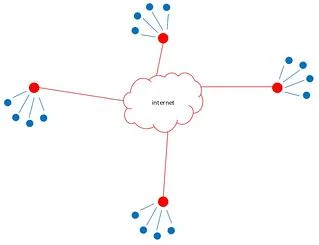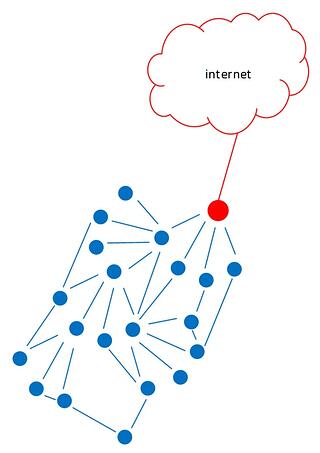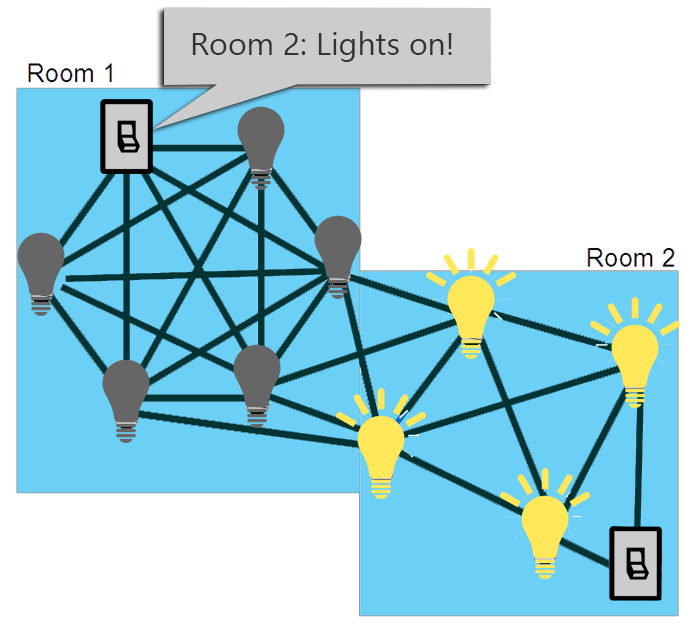Bluetooth Classic vs. Bluetooth low energy
Bluetooth was originally designed to exchange a lot of data at close range in continuous, streaming data applications. The devices are able to both send and receive data at the same time. This is perfect for many common consumer products, such as computer headsets, where the two devices are close together.
When Bluetooth low energy (BLE, formerly called Bluetooth Smart) hit the market in 2011, the key advantage over earlier versions was lower power consumption over the same range, but with lower bandwidth. It’s intended for devices that only need to exchange small amounts of data periodically, extending battery life by months or even years.
Bluetooth range compared
| BLUETOOTH V2.1 | BLUETOOTH 4.0 (LE) | BLUETOOTH 5 (LE) | |
|---|---|---|---|
| Range | Up to 100 m | Up to 100 m | Up to 400 m |
| Max range (free field) |
Around 100 m (class 2 outdoors) |
Around 100 m (outdoors) |
Around 1,000m (outdoors) |
| Frequency | 2.402 – 2.481 GHz | 2.402 – 2.481 GHz | 2.402 - 2.481 GHz |
| Max data rate | 1- 3 Mbit/s | 1 Mbit/s | 2 Mbit/s |
| Application Troughput |
0.7-2.1 Mbit/s | Up to 305 kbit/s | Up to 1,360 kbit/s |
| Topologies | Point-to-point, scatternet |
Point-to-point, mesh network |
Point-to-point, mesh network |
| Network Standard |
IEEE 802.15.1 | IEEE 802.15.1 | IEEE 802.15.1 |
Range depends on surroundings, radio performance and antennas
There are many factors affecting Bluetooth range, typically:
- The output power of the transmitter
- The sensitivity of the receiver
- Physical obstacles in the transmission path
- The antennas
While the radio performance and antennas are pretty static for a given Bluetooth device, the surroundings can vary a lot. Outdoors, in an open field, you can get a range of up to a hundred meters. But that is a rare situation. Indoors, obstacles like concrete walls will attenuate the radio signal and the effective range will be drastically reduced. In normal use, ten meters is a good guide to what can be achieved between two Bluetooth devices indoors.
When developing a Bluetooth device, you can give your device a better range by selecting the Bluetooth chip with the best receiver sensitivity and output power, and making sure that you use a good antenna.
Sometimes you may need to use Bluetooth over hundreds or thousands of meters. In the next section we will discuss how to extend Bluetooth range using networks.
Typical use of Bluetooth and Bluetooth low energy:
|
Bluetooth v2.1 |
|
|
Bluetooth low energy (BLE) |
|
Bluetooth 5 enhancements
Version 5 of the Bluetooth specification brought with it a number of improvements, all aimed at making the low energy part of Bluetooth more flexible:
- 2Mbps ‘high speed’ mode, allowing you to increase the data rate or reduce the average current consumption, at the cost of a small range reduction
- 125kbs or 500kbps ‘long range’ mode, allowing you to increase range at the cost of reduced data rate and increased average current consumption
- Advertising extension feature, allowing up to 8 times the data throughput in broadcasting applications (like beacons)
- Maximum output power increased from +10 dBm to +20 dBm, allowing more powerful power amplifiers to be used, boosting range further
- New channel selection policy added (CSA2), making it possible for more devices to co-exist in the same environment without interfering with each other

How to improve Bluetooth range with networking
You can connect Bluetooth devices to multiple distributed gateways connected to the internet. The Bluetooth devices can communicate with each other, and with online services, via these gateways.
This is an ideal solution if the devices are spread over a large geographical area. Each hub can usually only handle a few directly connected devices, which is another limitation of Bluetooth. You are likely to run into a situation where you want to handle hundreds or even thousands of Bluetooth devices in a relatively small area, such as an office building. For this you need to use a Mesh Network to connect the gateway and the local Bluetooth devices.
The power of mesh networks

The number of devices that require low-power operation and communication with other devices - and online services - is growing daily. In order to support this, BLE introduced support for Mesh Networks.
A Mesh Network allows you to connect a large number of Bluetooth devices over a wider area. In this situation, all devices, or “nodes”, in the same mesh are able to communicate with each other, either directly or via one or more intermediate nodes, as long as each node is close enough to at least two others.
This way, the network does not depend on a central gateway to pass all traffic.
Just like the Internet, data packets can find the most efficient route via any nodes between the sender and the receiver.
In a Mesh Network you can also use a “broadcasting” approach, where all nodes within the Mesh Network receive the same message, and then interpret it and take appropriate action.

One example could be a smart lighting system. Each switch or bulb is a node on a Mesh Network using Bluetooth low energy. Each bulb is configured to know which room it’s in.
The message is broadcast from Node 1, a light switch, via the mesh. The connected light bulbs in Room 1 receive this message, but they will not act upon it, as they know they are not in Room 2. The message is passed along and when it reaches the bulbs in Room 2, they turn on. Room 2 could be hundreds of meters away from Room 1, but will still receive the message via the other nodes in between. This way there could be a thousand or more rooms, all with lighting controlled from anywhere, using a Bluetooth low energy network.
